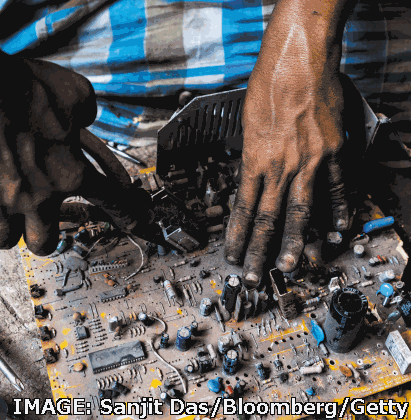Worldwide e-waste reviewed
 Research has warned that waste from discarded electronic gadgets and electrical appliances poses a threat to health and the environment.
Research has warned that waste from discarded electronic gadgets and electrical appliances poses a threat to health and the environment.
A new study by the United Nations University says China is the biggest contributor to the world’s growing piles of ‘e-waste’.
However, nearly every nation has seen massive increases in e-waste between 2010 and 2015, but many are unable to deal with mountains of discarded smartphones, computers, TVs, air conditioners and other goods.
Electronic waste in the 12 countries studied increased by nearly two-thirds in five years, hitting 12.3 million tonnes in 2015 alone, the study says.
“Consumers in Asia now replace their gadgets more frequently. In addition, many products are designed for low-cost production, but not necessarily repair, refurbishment or easy recycling,” said the report.
It called on governments to create specific laws for management of electronic waste, something only South Korea, Taiwan and Japan currently have.
The dumping of products filled with lead and mercury, burning of plastics to release copper and unsafe extraction operations are quite normal in countries like Indonesia, Thailand and Cambodia.
Backyard recycling operations seek gold, silver, palladium and copper, which often comes from soaking printed circuit boards in an acid bath that releases toxic fumes.
The experts say these practices are associated health problems for workers and communities including infertility, childhood development problems, impaired lung function, liver and kidney damage, inheritable genetic damage and mental health problems.
Ruediger Kuehr, one of the study's authors, said it should be a wake-up call to policymakers and consumers.
“We are all benefiting from the luxury of these electrical and electronic products to a certain extent, it makes our lives easier, sometimes more complicated,” he said.
“However if we want to continue like this we must be reusing the resources contained in electronic and electrical equipment.”







 Print
Print